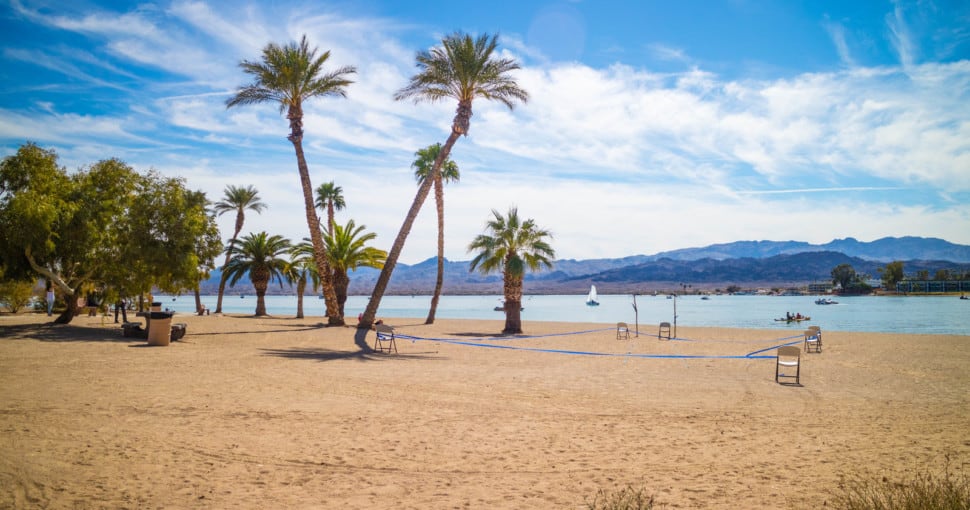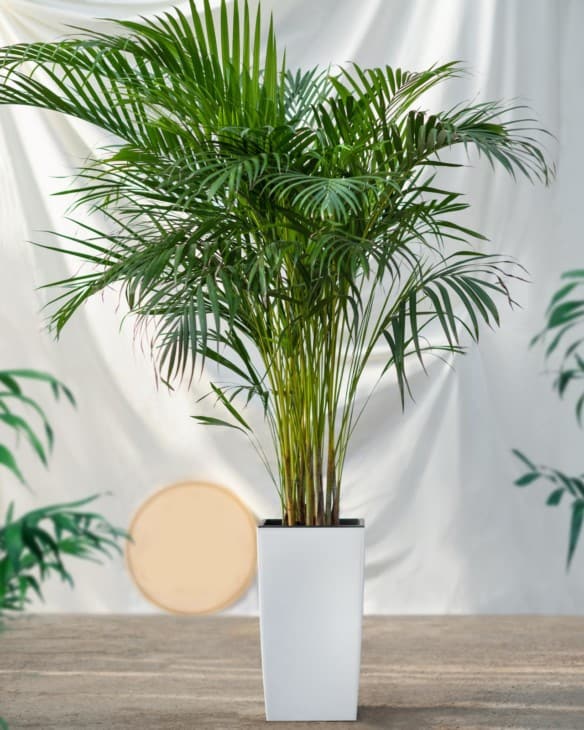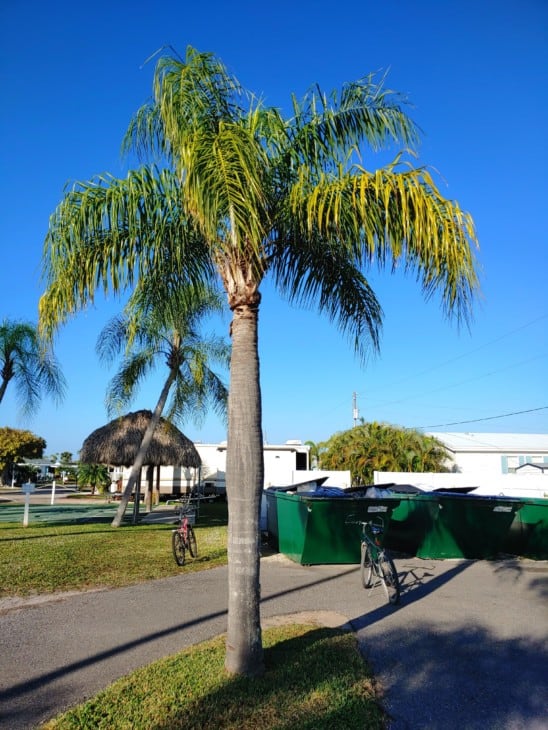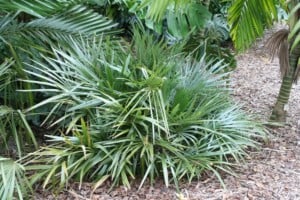Arizona is known for its hot, dry climate, so what better tree to plant there than the palm tree? Of course, this doesn’t mean that just any palm tree will do, but how do you know which ones will do best in the state? Fortunately, that is no longer a problem.
Contents
Palm trees look great and tend to be sturdy, long-lasting plants as well. What many people are unaware of is that there are more than 2,500 species of palm trees, so it can get a bit confusing deciding which one works best in certain parts of the country.
Fortunately, the right palm tree for Arizona is easy to find because the state can easily handle a large portion of these types of trees. Since palm trees are used to dry, hot climates, Arizona is the perfect place for them to grow and thrive.
That being said, people have to remember that one dry, desert-like area is not necessarily like all of the rest. What grows well in Las Vegas may not grow well in Phoenix, and vice versa.
But not to worry, because this article is designed to make this decision a little easier on homeowners wanting to plant palm trees in their yards. Below are a few of the palm trees that tend to do very well in Arizona.
Related: 4 Typical Types Of Pine Trees In Arizona
1. Areca Palm
These are not only attractive trees but also some of the least expensive palm trees available. Their trunks are smooth and a golden-yellow color, and they look great both planted in the ground and used in a variety of containers.
Many people use these palms as a way to purify the air in their homes, which is the perfect testament to its versatility. This type of tree makes the perfect palm tree for Arizona temperatures and will look great whether it’s indoors or outdoors.
If that wasn’t enough, Areca palm trees are low-maintenance trees, making them perfect for beginning gardeners who love palm trees but who aren’t sure if they’ll be successful at growing them.
2. Pygmy Date Palm
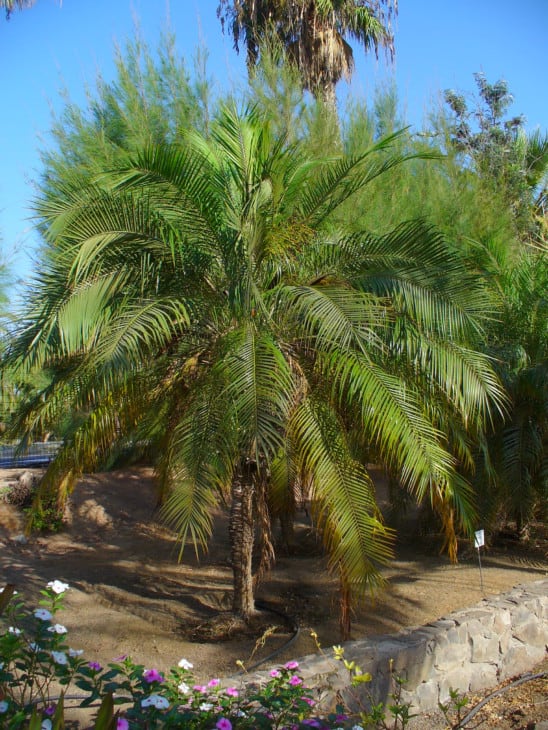
The thing that makes these palm trees so unique is their size. For people who love date palm trees but who simply don’t have the room to plant a standard one, the Pygmy date palm trees are the perfect solution.
These trees are essentially a smaller version of the Canary Island date palm or the Silver date palm tree, as their trunks rarely grow to more than 10 feet. They are native to Southeast Asia and look great regardless of where it is planted in someone’s yard.
The Pygmy Date palm tree is a very attractive palm tree – some would call it adorable – and is the perfect tree to buy for people who want an elegant look in their yard even if their yard is small.
3. Bismarck Palm
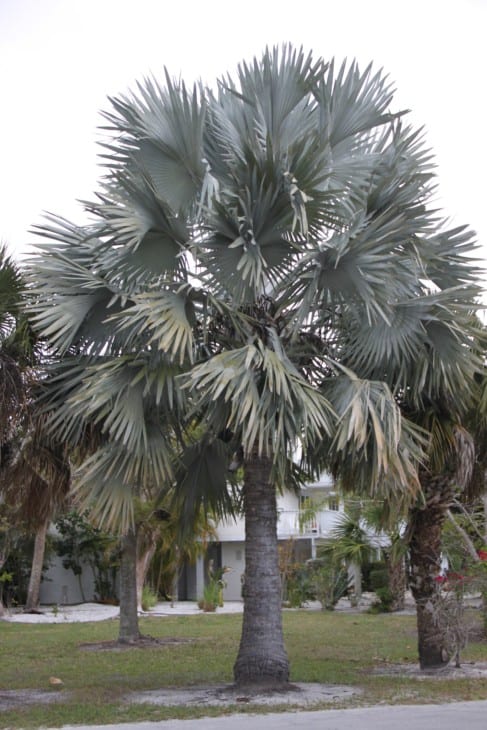
Bismarck palm trees get up to roughly 50 feet high and have a spread that can get up to 20 feet. The width of the trunk is about five feet, and they are moderate to fast growers, which means you won’t have to wait too long to enjoy their beauty.
These palm trees are commonly found in both homes and in commercial landscaping, in part because they are so attractive. They can also withstand colder temperatures, including below-freezing temperatures, and they are drought-resistant as well.
A lovely and versatile plant, Bismarck palm trees can be either a silvery-blue color or a bright-green color. Regardless of which one is chosen, the owner of the tree will never regret this purchase because the trees are real head-turners.
4. Mexican Blue Palm
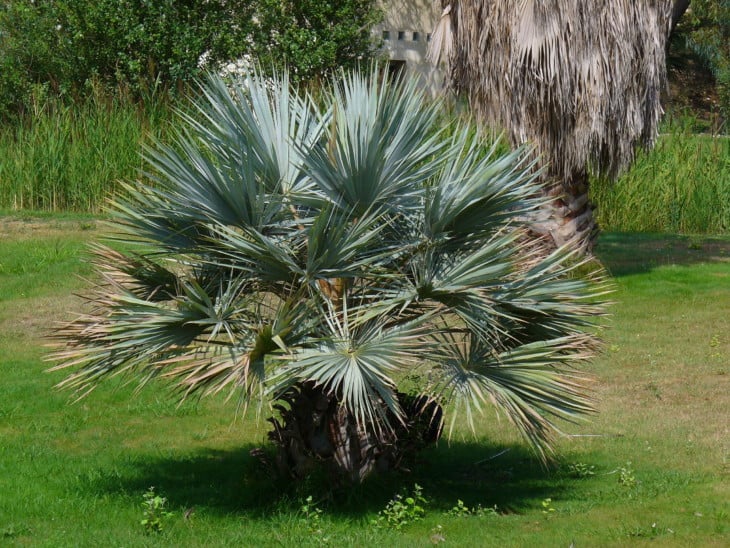
With bluish-silver leaves, these palm trees are nothing short of stunning, and their creamy-white flowers have a touch of fragrance that adds to their ambiance. They are slow growers that can get up to 30 feet high and 10 feet in width.
Even though they are slow growers, they are worth waiting for because their color and overall look are so unique. The trees look great both in containers and planted in yards because they are very versatile plants.
For people who wish to add a little color to the rest of their desert vegetable, Mexican Blue palm trees are a great option. They can also tolerate almost anything Mother Nature throws at them, which even beginning growers will appreciate.
5. Dioon Palm
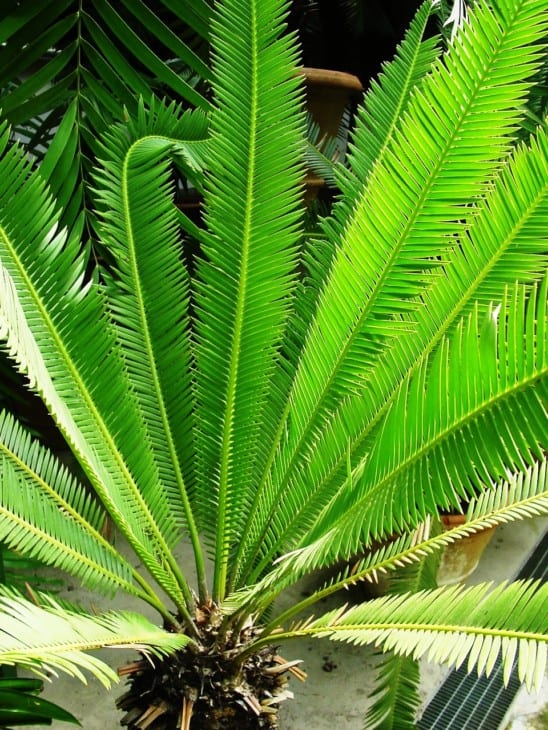
Dioon palm trees start out with lacy, fern-like leaves and eventually get foliage that resembles palms and which are a silvery-gray color. They are also not the largest of palm trees, getting up to only five feet in height and having a spread of three to five feet at best.
They are slow growers that have trunks of only one foot, and people who grow them as container plants have to make sure they don’t get too much direct sun. Otherwise, they may become sunburned.
Dioon palm trees can withstand desert weather but still need to be protected against too much wind and too much direct sunlight. They grow slowly but make the perfect addition to a landscape that has a tropical theme.
6. Mediterranean Fan Palm
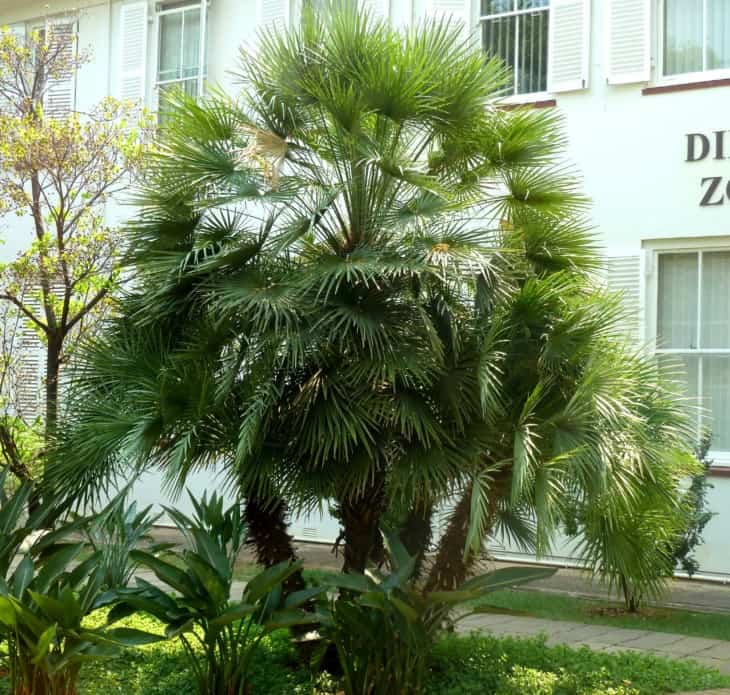
The Mediterranean Fan palm trees can be as short as 5 feet or as tall as 15 feet, while the spread can be 5 to 20 feet in width. They grow very slow and do best in either full sun or partial shade, so they tend to be low maintenance.
This multi-trunk palm tree has quite a unique look, and the leaf clusters are found at the end of each of these trunks. Best of all, they look great both in containers and planted separately somewhere else in the yard.
Mediterranean Fan palm trees prefer rich soil and a lot of water, but ironically, they can take a lot of neglect and keep on going. It seems that these palm trees will last a very long time regardless of how they are treated!
7. Queen Palm
Queen palm trees are indeed regal-looking because they are tall and slender and have leaves only at the very top. They grow 30 to 40 feet high and have spreads of 15 to 30 feet, and they are classified as moderate to fast growers.
With trunks of 1.5 to 2 feet, Queen palm trees do well when exposed to nitrogen fertilizer and extra iron, and they usually need a lot of water to grow well. They also need to be grown in elevations below 2,500 feet due to their sensitivity to cold.
Their upright trunks are gray in color and they have bright-green feathery leaves. Not only do these palm trees look great in homes (if the palm is pruned properly), but they also do very well in courtyards, commercial properties, and even along city streets.
8. Canary Island Date Palm
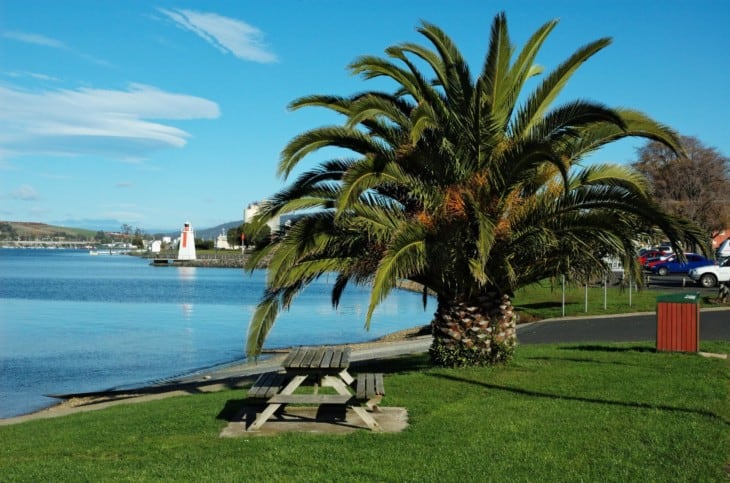
These trees are large and have feather-like leaves. The long, arching leaves are a beautiful color, being dark green but having a slight orange tint to them. The trees grow 40 to 50 feet high and can spread up to 40 feet wide.
The trees have a pineapple-shaped trunk and are often found in city landscapes or even on commercial properties. Best of all, they can grow in both full sun and partial shade.
The female trees make beautiful orange-yellow fruits in the fall, and when people buy the trees when they’re young, they make great container trees that look great regardless of where they are placed.

